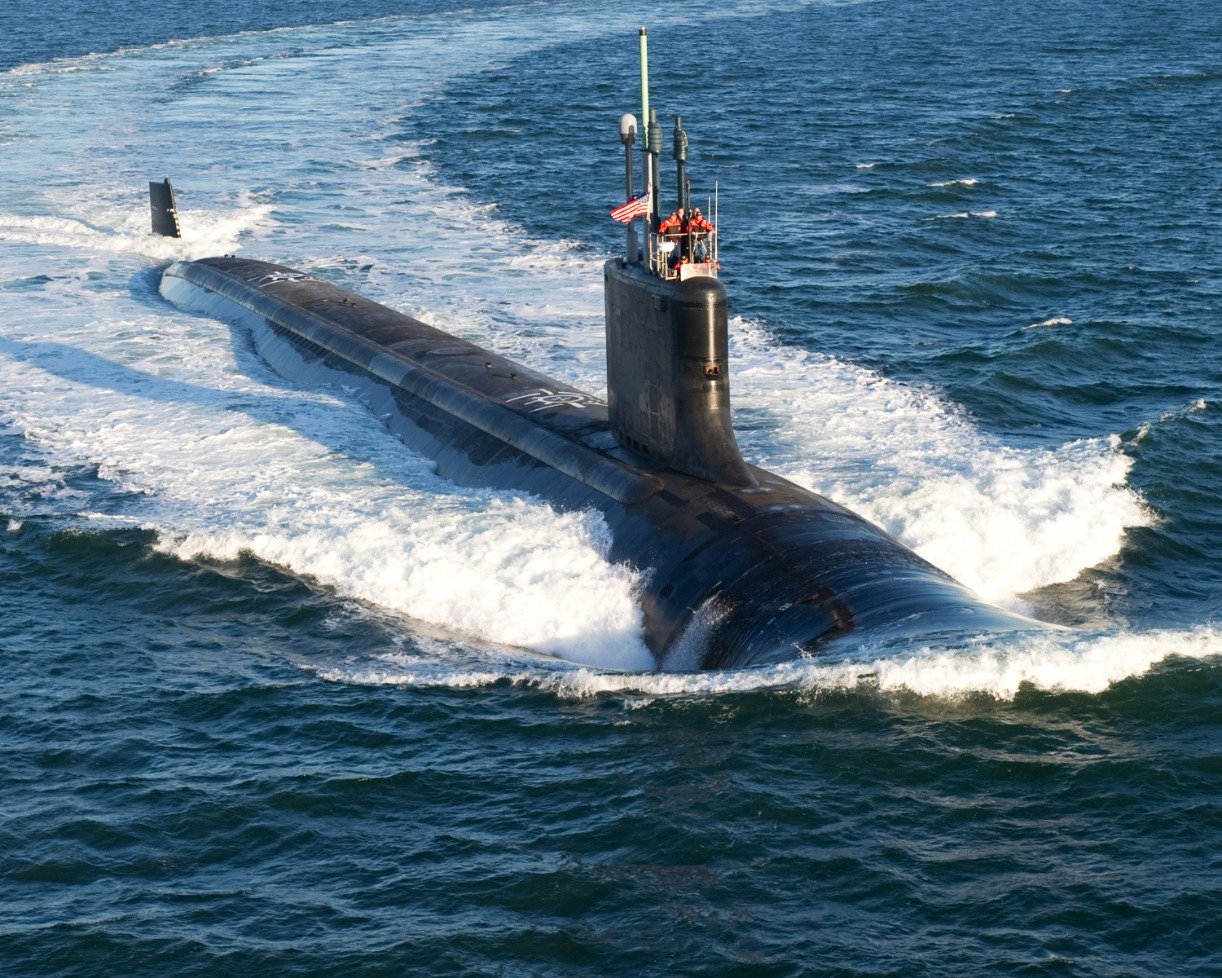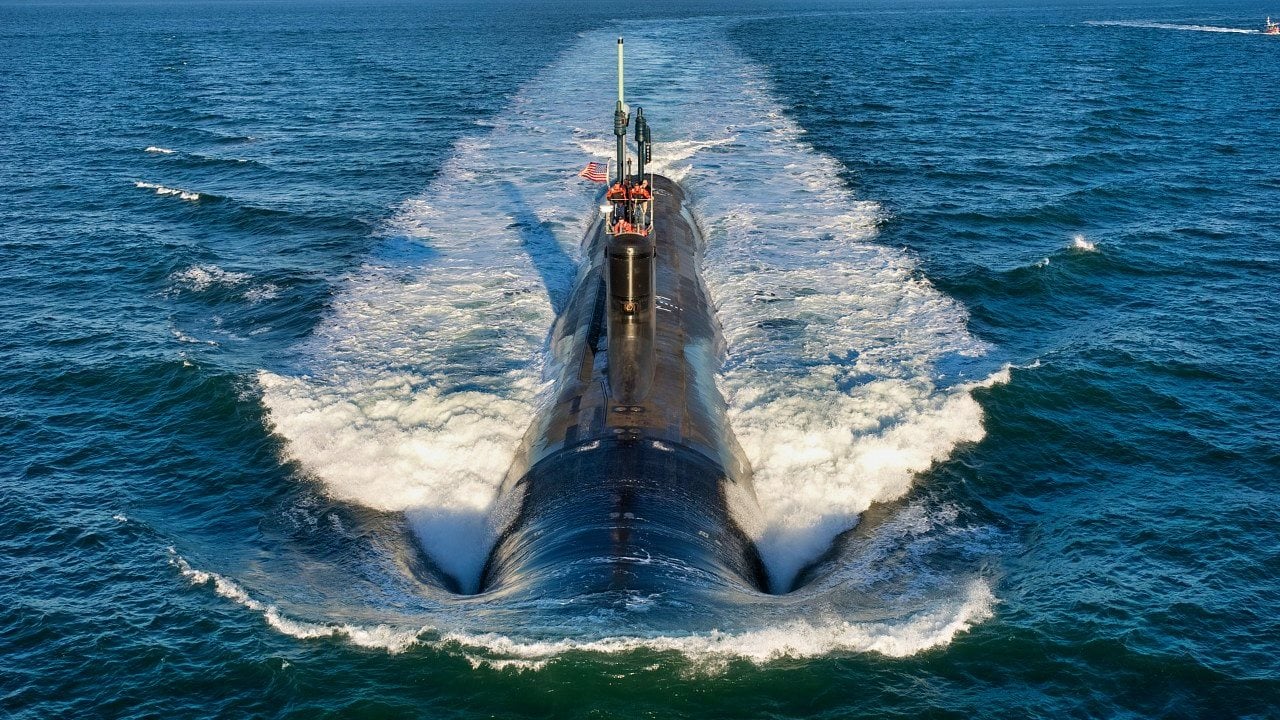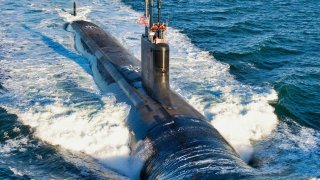The AUKUS Submarine Deal Might Have a Problem We Never Expected
It would appear that Britain’s senior naval leadership and the government have lost the commitment of their submarine arm.
Britain’s Royal Navy has advertised for a suitably experienced individual to fill the role of its director of submarines, a rear admiral who acts as the senior, professional head of its submarine arm. The position is to be filled in April 2024. If this is an early April fool’s joke, the UK Ministry of Defence is part of it.
As the Times newspaper observed on 5 January 2024, the advertisement ‘exposes shameful recruitment gaps’ in senior leadership positions in the RN’s submarine arm.
Under the AUKUS optimum pathway for Australia to transition to nuclear-propelled submarines, it is intended, subject to US congressional and presidential approval, to purchase three to five Virginia-class submarines to fill the capability gap left by the retirement of the six Collins-class boats. This is intended to allow time for a newly designed submarine to be built in partnership with the UK—the so-called AUKUS SSN. The state of the RN and particularly its submarine capability is therefore of more than passing interest.
This position would normally be filled by promoting a suitably qualified candidate from the RN’s senior serving submariners. The apparent lack of suitable candidates prepared to accept promotion to fill the position is extraordinary. Reportedly, internal advertising led to only one applicant, who lacked the pre-requisite submarine command experience. This failure led to the public advertisement.
Under my arguably simplistic interpretation, it would appear that Britain’s senior naval leadership and the government have lost the commitment of their submarine arm.
How did it come to this?
There was a steady decline in the RN submarine capability starting in the mid-1980s with the design of the Vanguard-class ballistic missile submarines. To save costs, the length of the submarine was constrained to fit into the existing dry docks. This led to a cramped and difficult-to-maintain submarine. Running them well beyond their design life of 25 years, and the protracted absence of one of the four submarines to refuel the reactor because of a defect, placed additional pressure on the remaining submarines. As a consequence, the very long patrols necessary to maintain the ‘continuous at-sea deterrent’ have severely strained morale and probably contributed to a recent ‘near miss’. Poaching of personnel from other submarines has reportedly been necessary to get submarines to sea. As Robert Forsyth argued recently, inadequate funding and the priority attached to this role have seriously eroded the RN’s conventional capability.
The process accelerated in the 1990s. With the fall of the Berlin Wall and the end of the Cold War, the project to replace the Swiftsure-class and Trafalgar-class attack submarines, called project SSN20, was cancelled to save costs. The submarine shipbuilding workforce dropped from 13,000 to 3,000 as building ceased. Many of these skilled workers moved away from Barrow to find other employment. The Royal Corps of Naval Constructors was significantly downsized, with a loss of in-house submarine design expertise. In 1991 the construction of further Upholder-class conventional submarines ceased and it was decided to decommission existing Upholder- and Oberon-class conventional submarines. This decision ended the route to early submarine command and charge positions for engineers, making a career in submarines less attractive.
In the early 1990s the RN began a process of decommissioning SSNs to reduce its force from 17 to 6 attack submarines. As a consequence, the number of serving submariners was reduced by more than half. This has narrowed the talent base and resulted in a lack of suitable candidates for senior positions, reinforcing the point I made recently about critical mass in submarine personnel. I would argue that the RN is below critical mass to create the senior leadership for its submarine force.
The story of the delayed and over-budget Astute class build is well set out in Wikipedia and the RAND review into the program.
More recently, in 2019 the second submarine squadron was disbanded; all submarines are now based in Faslane, Scotland. The remote location of Faslane and reduced chances of a posting to southern England make submarine careers less attractive.
Although all submarines have to be refitted in Plymouth/Devonport, the dry docks there are not up to standard. Two submarines, HMS Audacious and HMS Victorious have been alongside in Devonport for months, waiting for dry docks to be refurbished.
In a reorganisation, the position of flag officer submarines was disbanded, replaced by the director of submarines, a position buried in a larger headquarters. This is the job no suitably qualified serving submariner wishes to fill.

For those who trained and served with the RN, including the ‘Perisher’ command course, and lived in awe of the RN’s achievements in the Cold War, this is indeed a sad saga. It is an unfolding train smash, as the Navy Lookout observed recently: ‘The RN could be at a dangerous tipping point where there is such a loss of skills and institutional knowledge, that the situation becomes almost unrecoverable, even if greater resources are available in the future.’
It is not going to be fixed quickly, as with a pay rise!
Importantly, since the RN submarine capability is the foundation for the partnership upon which Australia intends to build our nuclear submarine capability it calls into question the practicality of the current, so-called ‘optimum pathway’.
There are lessons from this debacle for Australia’s AUKUS program.
The RN appears to lack critical mass and adequately funded build, logistic support and infrastructure programs. The limitations of the current UK submarine design base are another.
We should not accept any argument that building the first RAN SSN AUKUS in the UK would be quicker, cheaper or more efficient—let’s not fall for that April fool’s day joke! As I have argued earlier, suggestions that contemplate building the first of the RAN’s AUKUS submarines in the UK are profoundly disturbing and would condemn us to a UK-based supply chain.
Given the growing accumulation of political, personnel, schedule, cost, capability and design risks apparent with the ‘optimum pathway’ it is time to re-examine the plan.
Would it be possible to start building SSN AUKUS earlier if an updated Virginia was used as the basis for the design?

The designers should be tasked with achieving a simpler submarine, easier and quicker to build, simpler to operate and cheaper to own, including a smaller crew. Compared to the latest Block V Virginia, AUKUS (V) should be smaller and focused on sea denial, anti-submarine and anti-surface warfare with the agility to operate in the littorals. It could give the US Navy and RN an option to speed up their own build programs in the face of the deteriorating strategic setting.
If so, this would avoid the huge complications and expense of the RAN operating two different classes of SSN. It would build on the USN’s very successful Virginia construction program of 40-plus submarines and the facilities established to support the Virginia-class submarines based in WA as the Submarine Rotational Force—West (SRF-W).

Importantly, it would avoid the risk of a delayed UK-based design phase, which seems highly likely, given the parlous state of the UK’s submarine capability and current priority afforded the construction of the Dreadnought-class ballistic missile submarines.
Finally, it could also reduce or avoid the need to purchase three to five Virginia-class SSNs from the USN, something that is looking increasingly improbable and difficult. In the interim, the SRF-W and Collins provide Australia’s submarine capability. Just a thought.
About the Author
Peter Briggs is a retired submarine specialist and a past president of the Submarine Institute of Australia.
This article was first published by The Australian Strategic Policy Institute.
All images are Creative Commons.


